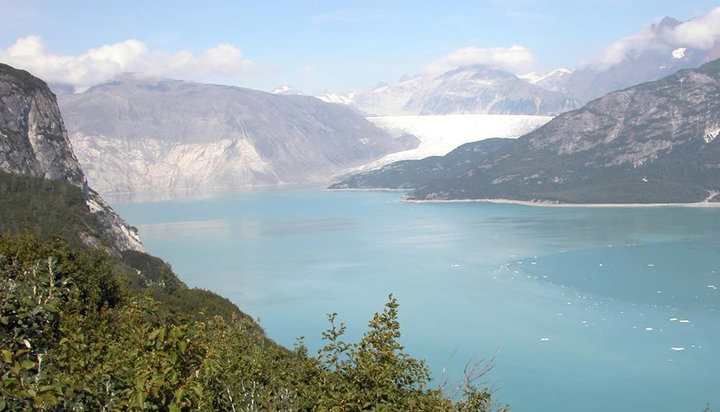
AniceberginEastGreenlandbreaksfromtheendofthistidewater glacier.
Therearemanyothertypesofglaciers.Valleyglacierseroderocks,carvingoutsteep,U‑shapedvalleys.Tidewaterglaciersflowintotheocean.Whathappenswhenafrozenglaciermeetsoceanwater?Itcancrackandpiecescanfallintotheocean.Hugechunksoficefromtheglacierthenform icebergs.

Piedmontglaciers,likethisoneinCanada,formwide,roundshapesastheyspilloutontoflat areas.
Glacier101
Today,therearehundredsofthousandsofglaciersworldwide.Somearehuge.ThereareicesheetsthatareroughlythesizeoftheU.S. statesofDelaware,Maryland,andNewJerseycombined!Onlytwoicesheetsexistintheworld—inGreenlandandin Antarctica.

AlakeformsattheterminusofthisIcelandicvalley glacier.
Piedmontglaciersflowfromsteepmountainareasontoflatareas.Theicethenstretchesoutintohugecrescentshapes.Therearetinyglacierscalledglacierets.Therearemysteriousglacierscalledrockglaciers.Theyaremadefromrockandicefusedtogether.Therearesomanyothertypesofglaciers,andnotwoare alike.
GlobalGlaciers
Glaciersarefoundallovertheworld,andtheyaffecttheenvironment.Theymakelocalweather.Theybuildandshapevastlandscapes.Theyprovidewaterandotheressentialresources.Theyrevealenvironmentalimbalances.Theyconnectculturestolandscapes.Theyevenprovidespiritualfulfillment.Tome,that’swhatissopowerfulabout glaciers.
Now,duetoclimatechange,glaciersaremelting.ThiswillhaveaprofoundeffectonEarth.Sealevelswillrise.Otherwatersourcesmaydryup.Andmanypeoplewholivewithglaciersmaylosepartoftheirwayof life.
MuirGlacier,Alaska:August13,1941andAugust31, 2004

ThiswintericecaveformedwithinanIcelandic glacier.
EverytimeIexploreaglacier,Ikeeponethinginmind.Iceinfluencespeoplejustasmuchasweinfluenceice.Andthatmeans,whathappenstoglaciers,happensto us.



